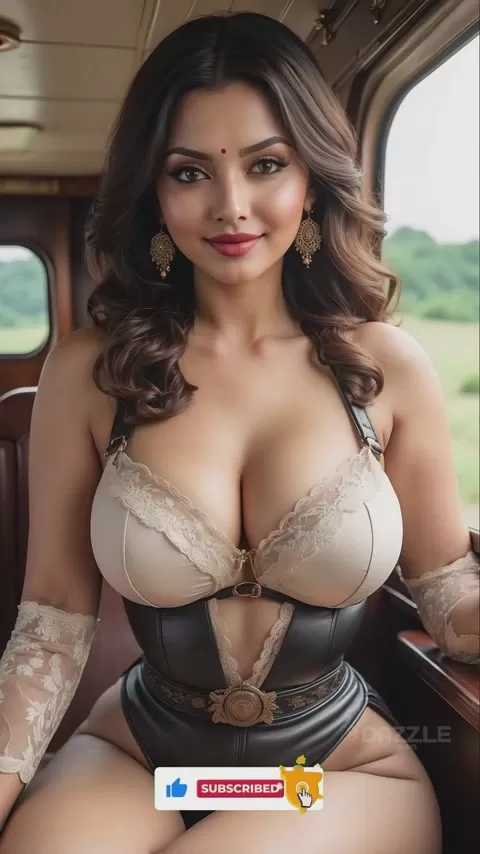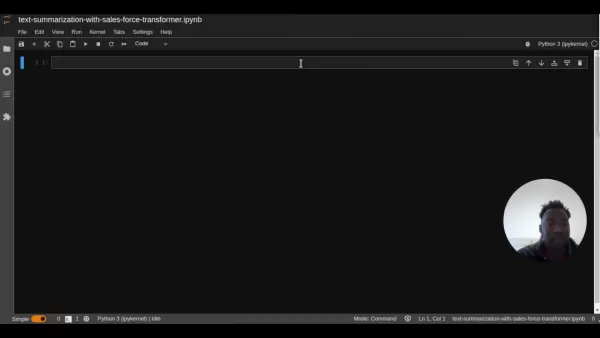AI Generates Stunning Beauty: Discovering the Fascinating Realm of AI Models
Digital aesthetics are undergoing a rapid transformation, thanks to the emergence of artificial intelligence. AI-generated models are becoming more realistic and captivating, pushing the limits of creativity and sparking important discussions about authenticity and representation. In this post, we’ll dive deep into this fascinating realm, exploring the rise of AI beauty, the underlying technology, and its implications for the future of art and design. Get ready to be captivated by what lies ahead!
The Rise of AI Beauty
What exactly is AI beauty? At its core, AI beauty refers to the use of artificial intelligence to generate visually appealing content, particularly models and images that either conform to or redefine conventional beauty standards. This field blends computer science, art, and design to create digital personas and visuals that often blur the line between reality and simulation. AI beauty isn’t just about replicating human features—it’s about exploring and redefining what beauty can mean in the digital age.
The images produced are typically hyper-realistic and can be customized to meet specific aesthetic criteria. At the heart of this process are algorithms that learn from extensive datasets of images and then generate new content based on this knowledge. This allows for the creation of models that don’t exist in the physical world, tailored to fit particular artistic visions. It’s a major leap forward from traditional modeling and photography, offering fresh avenues for creativity and efficiency.
- Generation of highly realistic models
- Customization of features like age, ethnicity, body type, and style
- Efficient and cost-effective creation of models
- Increased accessibility for individuals and small businesses
As AI technology continues to progress, the capabilities of AI beauty are expanding, presenting new opportunities for artistic expression and commercial applications. However, it also raises important ethical considerations that must be addressed.
Historical Context and Evolution of AI Modeling
Although the idea of AI in art isn’t new, today’s version is the result of decades of technological advancements. Early attempts at computer-generated art were basic, lacking the sophistication we see today. Still, these initial efforts paved the way for the complex algorithms and machine learning models driving AI beauty today.
In the past, early stages of AI art focused on procedural generation, where artists and programmers crafted rules and algorithms to produce artwork. These pieces often had a distinct, algorithmic appearance, setting them apart from human-made art. Over time, as computing power grew and machine learning techniques evolved, AI became capable of analyzing vast datasets of images and learning to mimic human styles and techniques.
The introduction of Generative Adversarial Networks (GANs) marked a pivotal moment. GANs consist of two neural networks: a generator that creates new images and a discriminator that evaluates their authenticity. Through this adversarial process, the generator is pushed to produce increasingly realistic images, leading to the high-quality AI models we see today.

GANs are now a cornerstone of AI beauty, enabling the creation of photorealistic models and diverse artistic styles. From simple beginnings, AI modeling has come a long way, reflecting humanity’s relentless pursuit of realism, customization, and efficiency. As technology progresses, we can expect AI beauty to become even more advanced, further blurring the lines between human and machine-generated art.
Ethical and Societal Implications of AI Beauty
The rise of AI beauty brings along a complex set of ethical challenges that demand careful attention. One of the biggest concerns is the potential for misrepresentation and the reinforcement of unrealistic beauty standards. AI models are frequently designed to embody idealized versions of beauty, which can lead to feelings of inadequacy and dissatisfaction among individuals exposed to these images.

It’s crucial to think critically about the impact of these AI-generated personas on self-perception and mental health. Another ethical challenge is the issue of consent and data privacy. AI algorithms rely on large datasets of images to learn and generate new content. The origins of these images and whether individuals’ consent was obtained can be unclear. There’s a risk of perpetuating biases present in the data, resulting in AI models that reinforce stereotypes and discriminatory practices.
Authenticity and transparency are also key considerations. When images are created by AI, it’s vital to clearly disclose this information to avoid misleading viewers. Failure to do so can damage trust and create confusion about what is real and what is artificially created.
- Unrealistic beauty standards
- Data privacy concerns
- Bias amplification
- Authenticity and transparency
- Impact on human models
Tackling these ethical challenges calls for a collaborative effort involving developers, policymakers, and the public. Establishing guidelines and regulations that promote responsible AI development is essential to ensure AI beauty benefits society as a whole.
Societal Impact and the Future of Representation
The growing presence of AI-generated models has far-reaching implications for industries like fashion, advertising, and entertainment. AI models offer a cost-effective and efficient alternative to traditional models, potentially disrupting established career paths. While AI can enhance creativity and streamline workflows, it’s important to consider the potential impact on human jobs and livelihoods.
The future of representation is also being reshaped by AI. AI models can be customized to represent diverse ethnicities, body types, and abilities, offering a more inclusive vision of beauty. However, it’s crucial to ensure this diversity is authentic and not merely superficial. AI should celebrate real people and promote positive messages about body image and self-acceptance.
As AI technology continues to evolve, the role of human artists and designers will also shift. AI can serve as a powerful tool for augmenting creativity, enabling artists to explore new ideas and create more complex artwork. However, it’s important to preserve the human element in art and design, ensuring AI enhances rather than replaces human creativity.
- Industry disruption
- Impact on human jobs
- Representation and diversity
- Evolution of artistic roles
- Need for regulation
The future of AI beauty hinges on our ability to navigate these ethical and societal challenges. By promoting responsible AI development, fostering inclusivity, and preserving human creativity, we can harness the power of AI to create a more beautiful and equitable world.
How to Leverage AI for Creative Projects
Creating AI-generated models involves several steps, from choosing the right tools to refining the output. Here’s a step-by-step guide to help you get started:
1. Select an AI Platform
There are numerous platforms to choose from, each with its own strengths:
- DeepMotion: Focuses on motion capture and animation.
- RunwayML: Versatile platform for various AI tasks, including image generation.
- Artbreeder: Collaborative platform for creating and evolving images.
- DALL-E 2: OpenAI’s powerful image generation model.
- Midjourney: AI Art Generator accessible via Discord.
2. Prepare Your Data
Before training your AI model, gather a high-quality and diverse dataset of images that align with your desired aesthetic. Clean the data to eliminate irrelevant or biased content.
3. Train the AI Model
Use the selected platform to train your model on your dataset. Adjust parameters and monitor the training process to optimize the output.
4. Generate AI Models
Once trained, use the model to generate new images. Experiment with prompts and settings to explore various styles. Iterate on the output to refine the results.
5. Post-Processing
Enhance the AI-generated models using image editing software. Adjust colors, lighting, and details to match your creative vision.
By following these steps, you can effectively leverage AI to create stunning models and visuals for your creative projects.
Pricing Models for AI Image Generation Platforms
The cost of AI image generation platforms varies depending on the platform and level of access required. Some offer free trials or limited free usage, while others operate on subscription or credit-based systems. Here’s an overview of pricing models for popular platforms:
Subscription-Based
- Midjourney: Monthly subscriptions with varying levels of access and features.
- RunwayML: Tiered subscription plans based on usage and computing power.
Credit-Based
- DALL-E 2
Related article
 Seeking Faith and Purpose in an Age of Skepticism
In our modern age of scientific inquiry and critical thinking, maintaining spiritual faith often feels like walking against the tide. Many struggle to reconcile timeless beliefs with contemporary skepticism, leaving them longing for deeper meaning. T
Seeking Faith and Purpose in an Age of Skepticism
In our modern age of scientific inquiry and critical thinking, maintaining spiritual faith often feels like walking against the tide. Many struggle to reconcile timeless beliefs with contemporary skepticism, leaving them longing for deeper meaning. T
 How ChatGPT Works: Capabilities, Applications, and Future Implications
The rapid evolution of artificial intelligence is transforming digital interactions and communication. Leading this transformation is ChatGPT, an advanced conversational AI that sets new standards for natural language processing. This in-depth examin
How ChatGPT Works: Capabilities, Applications, and Future Implications
The rapid evolution of artificial intelligence is transforming digital interactions and communication. Leading this transformation is ChatGPT, an advanced conversational AI that sets new standards for natural language processing. This in-depth examin
 Salesforce’s Transformer Model Guide: AI Text Summarization Explained
In an era where information overload is the norm, AI-powered text summarization has become an indispensable tool for extracting key insights from lengthy documents. This comprehensive guide examines Salesforce's groundbreaking AI summarization techno
Comments (1)
0/200
Salesforce’s Transformer Model Guide: AI Text Summarization Explained
In an era where information overload is the norm, AI-powered text summarization has become an indispensable tool for extracting key insights from lengthy documents. This comprehensive guide examines Salesforce's groundbreaking AI summarization techno
Comments (1)
0/200
![MatthewCarter]() MatthewCarter
MatthewCarter
 August 4, 2025 at 2:01:00 AM EDT
August 4, 2025 at 2:01:00 AM EDT
This article blew my mind! AI creating such realistic models is wild—it's like we're living in a sci-fi movie. But I wonder, are we ready for the ethical mess this could stir up? 🤔


 0
0
Top News
Gemini 2.5 Pro Now Unlimited and Cheaper Than Claude, GPT-4o
Top AI Video Generators in 2025: Pika Labs Compared to Alternatives
AI Voiceover: Ultimate Guide to Realistic AI Voice Creation
Cambium's AI Transforms Waste Wood into Lumber
OpenAI Enhances AI Voice Assistant for Better Chats
How to Ensure Your Data is Trustworthy for AI Integration
NotebookLM Expands Globally, Adds Slides and Enhanced Fact-Checking
Tweaks to US Data Centers Could Unlock 76 GW of New Power Capacity
Google Utilizes AI to Suspend Over 39 Million Ad Accounts for Suspected Fraud
AI Voice Cloning: The Ultimate Guide to Mastering Voice Conversion
More
Featured
 Claude
Meet Claude: Your AI Assistant for Smart
Claude
Meet Claude: Your AI Assistant for Smart
 Cici AI
Ever wondered what Cici AI is all about?
Cici AI
Ever wondered what Cici AI is all about?
 Gemini
Ever wondered what the buzz about Gemini
Gemini
Ever wondered what the buzz about Gemini
 DeepSeek
Ever wondered what DeepSeek is all about
DeepSeek
Ever wondered what DeepSeek is all about
 Grok
Ever heard of Grok? It's this nifty AI a
Grok
Ever heard of Grok? It's this nifty AI a
 ChatGPT
Ever wondered what ChatGPT is all about?
ChatGPT
Ever wondered what ChatGPT is all about?
 OpenAI
Ever wondered what the buzz around OpenA
OpenAI
Ever wondered what the buzz around OpenA
 Tencent Hunyuan
Tencent Hunyuan-Large, huh? It's like th
Tencent Hunyuan
Tencent Hunyuan-Large, huh? It's like th
 Qwen AI
Ever wondered what Qwen AI is all about?
Qwen AI
Ever wondered what Qwen AI is all about?
 Runway
Ever wondered how to turn your regular v
More
Runway
Ever wondered how to turn your regular v
More
Digital aesthetics are undergoing a rapid transformation, thanks to the emergence of artificial intelligence. AI-generated models are becoming more realistic and captivating, pushing the limits of creativity and sparking important discussions about authenticity and representation. In this post, we’ll dive deep into this fascinating realm, exploring the rise of AI beauty, the underlying technology, and its implications for the future of art and design. Get ready to be captivated by what lies ahead!
The Rise of AI Beauty
What exactly is AI beauty? At its core, AI beauty refers to the use of artificial intelligence to generate visually appealing content, particularly models and images that either conform to or redefine conventional beauty standards. This field blends computer science, art, and design to create digital personas and visuals that often blur the line between reality and simulation. AI beauty isn’t just about replicating human features—it’s about exploring and redefining what beauty can mean in the digital age.
The images produced are typically hyper-realistic and can be customized to meet specific aesthetic criteria. At the heart of this process are algorithms that learn from extensive datasets of images and then generate new content based on this knowledge. This allows for the creation of models that don’t exist in the physical world, tailored to fit particular artistic visions. It’s a major leap forward from traditional modeling and photography, offering fresh avenues for creativity and efficiency.
- Generation of highly realistic models
- Customization of features like age, ethnicity, body type, and style
- Efficient and cost-effective creation of models
- Increased accessibility for individuals and small businesses
As AI technology continues to progress, the capabilities of AI beauty are expanding, presenting new opportunities for artistic expression and commercial applications. However, it also raises important ethical considerations that must be addressed.
Historical Context and Evolution of AI Modeling
Although the idea of AI in art isn’t new, today’s version is the result of decades of technological advancements. Early attempts at computer-generated art were basic, lacking the sophistication we see today. Still, these initial efforts paved the way for the complex algorithms and machine learning models driving AI beauty today.
In the past, early stages of AI art focused on procedural generation, where artists and programmers crafted rules and algorithms to produce artwork. These pieces often had a distinct, algorithmic appearance, setting them apart from human-made art. Over time, as computing power grew and machine learning techniques evolved, AI became capable of analyzing vast datasets of images and learning to mimic human styles and techniques.
The introduction of Generative Adversarial Networks (GANs) marked a pivotal moment. GANs consist of two neural networks: a generator that creates new images and a discriminator that evaluates their authenticity. Through this adversarial process, the generator is pushed to produce increasingly realistic images, leading to the high-quality AI models we see today.

GANs are now a cornerstone of AI beauty, enabling the creation of photorealistic models and diverse artistic styles. From simple beginnings, AI modeling has come a long way, reflecting humanity’s relentless pursuit of realism, customization, and efficiency. As technology progresses, we can expect AI beauty to become even more advanced, further blurring the lines between human and machine-generated art.
Ethical and Societal Implications of AI Beauty
The rise of AI beauty brings along a complex set of ethical challenges that demand careful attention. One of the biggest concerns is the potential for misrepresentation and the reinforcement of unrealistic beauty standards. AI models are frequently designed to embody idealized versions of beauty, which can lead to feelings of inadequacy and dissatisfaction among individuals exposed to these images.

It’s crucial to think critically about the impact of these AI-generated personas on self-perception and mental health. Another ethical challenge is the issue of consent and data privacy. AI algorithms rely on large datasets of images to learn and generate new content. The origins of these images and whether individuals’ consent was obtained can be unclear. There’s a risk of perpetuating biases present in the data, resulting in AI models that reinforce stereotypes and discriminatory practices.
Authenticity and transparency are also key considerations. When images are created by AI, it’s vital to clearly disclose this information to avoid misleading viewers. Failure to do so can damage trust and create confusion about what is real and what is artificially created.
- Unrealistic beauty standards
- Data privacy concerns
- Bias amplification
- Authenticity and transparency
- Impact on human models
Tackling these ethical challenges calls for a collaborative effort involving developers, policymakers, and the public. Establishing guidelines and regulations that promote responsible AI development is essential to ensure AI beauty benefits society as a whole.
Societal Impact and the Future of Representation
The growing presence of AI-generated models has far-reaching implications for industries like fashion, advertising, and entertainment. AI models offer a cost-effective and efficient alternative to traditional models, potentially disrupting established career paths. While AI can enhance creativity and streamline workflows, it’s important to consider the potential impact on human jobs and livelihoods.
The future of representation is also being reshaped by AI. AI models can be customized to represent diverse ethnicities, body types, and abilities, offering a more inclusive vision of beauty. However, it’s crucial to ensure this diversity is authentic and not merely superficial. AI should celebrate real people and promote positive messages about body image and self-acceptance.
As AI technology continues to evolve, the role of human artists and designers will also shift. AI can serve as a powerful tool for augmenting creativity, enabling artists to explore new ideas and create more complex artwork. However, it’s important to preserve the human element in art and design, ensuring AI enhances rather than replaces human creativity.
- Industry disruption
- Impact on human jobs
- Representation and diversity
- Evolution of artistic roles
- Need for regulation
The future of AI beauty hinges on our ability to navigate these ethical and societal challenges. By promoting responsible AI development, fostering inclusivity, and preserving human creativity, we can harness the power of AI to create a more beautiful and equitable world.
How to Leverage AI for Creative Projects
Creating AI-generated models involves several steps, from choosing the right tools to refining the output. Here’s a step-by-step guide to help you get started:
1. Select an AI Platform
There are numerous platforms to choose from, each with its own strengths:
- DeepMotion: Focuses on motion capture and animation.
- RunwayML: Versatile platform for various AI tasks, including image generation.
- Artbreeder: Collaborative platform for creating and evolving images.
- DALL-E 2: OpenAI’s powerful image generation model.
- Midjourney: AI Art Generator accessible via Discord.
2. Prepare Your Data
Before training your AI model, gather a high-quality and diverse dataset of images that align with your desired aesthetic. Clean the data to eliminate irrelevant or biased content.
3. Train the AI Model
Use the selected platform to train your model on your dataset. Adjust parameters and monitor the training process to optimize the output.
4. Generate AI Models
Once trained, use the model to generate new images. Experiment with prompts and settings to explore various styles. Iterate on the output to refine the results.
5. Post-Processing
Enhance the AI-generated models using image editing software. Adjust colors, lighting, and details to match your creative vision.
By following these steps, you can effectively leverage AI to create stunning models and visuals for your creative projects.
Pricing Models for AI Image Generation Platforms
The cost of AI image generation platforms varies depending on the platform and level of access required. Some offer free trials or limited free usage, while others operate on subscription or credit-based systems. Here’s an overview of pricing models for popular platforms:
Subscription-Based
- Midjourney: Monthly subscriptions with varying levels of access and features.
- RunwayML: Tiered subscription plans based on usage and computing power.
Credit-Based
- DALL-E 2
Related article
 Seeking Faith and Purpose in an Age of Skepticism
In our modern age of scientific inquiry and critical thinking, maintaining spiritual faith often feels like walking against the tide. Many struggle to reconcile timeless beliefs with contemporary skepticism, leaving them longing for deeper meaning. T
Seeking Faith and Purpose in an Age of Skepticism
In our modern age of scientific inquiry and critical thinking, maintaining spiritual faith often feels like walking against the tide. Many struggle to reconcile timeless beliefs with contemporary skepticism, leaving them longing for deeper meaning. T
 How ChatGPT Works: Capabilities, Applications, and Future Implications
The rapid evolution of artificial intelligence is transforming digital interactions and communication. Leading this transformation is ChatGPT, an advanced conversational AI that sets new standards for natural language processing. This in-depth examin
How ChatGPT Works: Capabilities, Applications, and Future Implications
The rapid evolution of artificial intelligence is transforming digital interactions and communication. Leading this transformation is ChatGPT, an advanced conversational AI that sets new standards for natural language processing. This in-depth examin
 Salesforce’s Transformer Model Guide: AI Text Summarization Explained
In an era where information overload is the norm, AI-powered text summarization has become an indispensable tool for extracting key insights from lengthy documents. This comprehensive guide examines Salesforce's groundbreaking AI summarization techno
Comments (1)0/200MatthewCarter
Salesforce’s Transformer Model Guide: AI Text Summarization Explained
In an era where information overload is the norm, AI-powered text summarization has become an indispensable tool for extracting key insights from lengthy documents. This comprehensive guide examines Salesforce's groundbreaking AI summarization techno
Comments (1)0/200MatthewCarter August 4, 2025 at 2:01:00 AM EDT
August 4, 2025 at 2:01:00 AM EDT
This article blew my mind! AI creating such realistic models is wild—it's like we're living in a sci-fi movie. But I wonder, are we ready for the ethical mess this could stir up? 🤔


 0
0
































